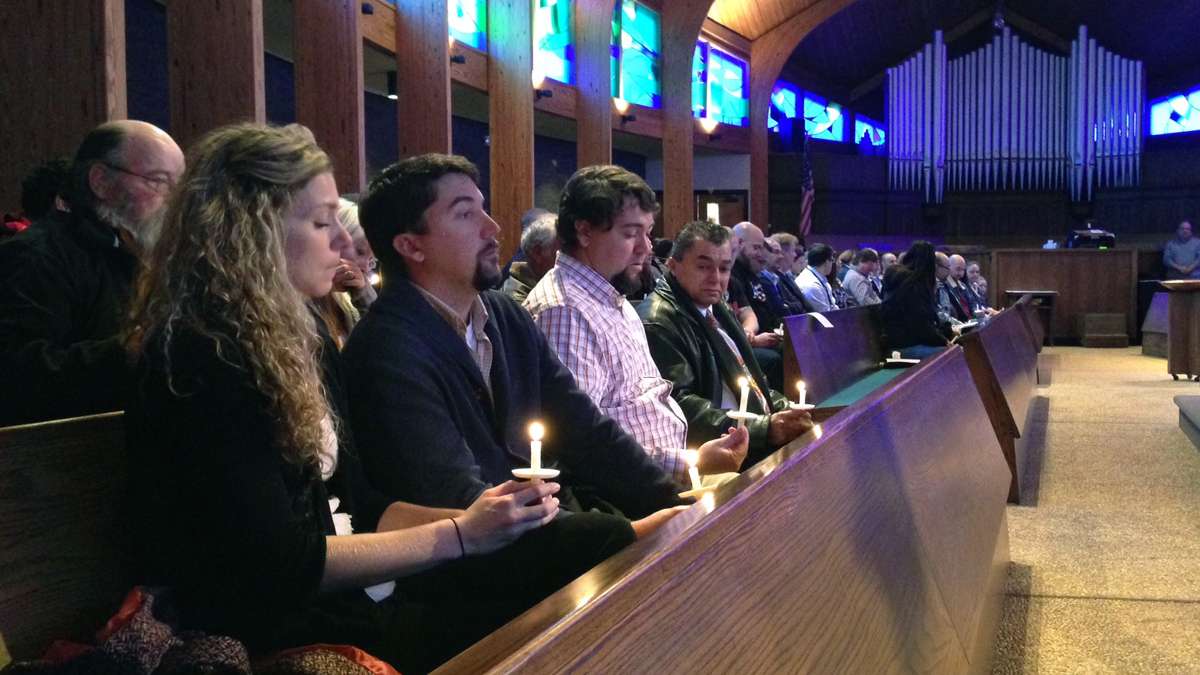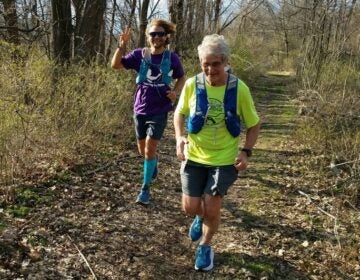After hitting rock bottom, N.J. drug users must wait for treatment
Listen
Sheryl Santiago organized a candlelight vigil at St. Paul Lutherian Church in Toms River, N.J., in December in remembrance of people who died from overdoses in 2013. (Tracey Samuelson/WHYY)
Sheryl Santiago’s son, Erik, was addicted to pills he’d been prescribed for anxiety and depression. Just over a year ago, he tried to quit.
“He kept saying I’m going to make everyone so proud of me that I’m getting off this,” Santiago said. “He said my brothers will be so proud of me.”
But deciding he needed help and getting treatment — those were two different things.
“As soon as he contacted [a treatment facility], he thought he could go that night,” Santiago recalled. “He was ready to go and then he just got more and more discouraged.”
Eric didn’t have health insurance, and neither he nor his parents could afford the private facilities. So the first step for the family was to purchase insurance for Eric.
“When we got the insurance, they only covered a couple places, and they had waiting lists,” she said.
A few weeks later, Eric was moved off the waitlist at a local treatment facility in Ocean County, N.J. However he had been trying to stop using drugs on his own while he waited for help, and the program he was accepted into was the kind of place that assists patients detox with the help of medication. Like many facilities of this type, it required potential patients to be active drug users to get treatment, to actually fail a drug test.
“He told me, he goes, ‘don’t be mad at me if I use something because I have to test dirty in order to go into their program,’” said Santiago. “And he did, he must have used whatever he was using prior — the dosage — and it was too much.”
Santiago says Eric had been clean for four weeks before he overdosed. In that time, his body may have lost some of its tolerance for the drug.
He had just turned 31 when he died, so it’s hard not to play a game of “what-ifs?” but Santiago believes her son would still be here today if he’d gotten into a program right away.
“There’s not enough beds, there’s not enough providers,” confirmed Bruno Silie, a health educator who helps place addicts in treatment facilities at a drop-in center run by the South Jersey AIDS Alliance in Atlantic City.
“There’s options, but the waiting period is ridiculous,” he added. “I’ve had clients wait for 60-plus days, and by that time they’ve given up.”
“You really have to strike when the iron’s hot,” agreed Kimberly Reilly, the alcohol and drug coordinator in Ocean County. “So if someone comes to us and says I’m motivated for treatment, you really want to get them in, really, within that hour, because the next hour they could be off looking for their next hit of heroin.”
Reilly says beds for inpatient programs in Ocean County are especially scarce.
“A private detox facility just opened up, but for our indigent population, they’re going to be on a waitlist until a bed opens up,” she said.
That might takes weeks.
“It’s very rare that we can navigate the system and get someone in same day,” she said.
There are simply not enough beds to meet New Jersey’s growing demand for substance abuse treatment. Statewide, admissions are up nearly 40 percent since 2006. As the state moves divert more nonviolent drug users to treatment over prison, the waiting lists are even more of an issue.
Increasingly, people are seeking treatment for heroin and opiate additions. In Ocean County, half the admissions last year were for heroin. It’s cheap and easily accessible, so many users turn to the drug after getting addicted to prescription pills, such as OxyContin.
“This a trend that we’re seeing in other counties,” said Reilly. “So we’re definitely having an epidemic in the state of New Jersey.”
Reilly says one of her counselors can start the day with 40 voicemails from people asking for help. Even if they don’t qualify for the county’s grants or programs, they try to place people somewhere — Narcotics Anonymous or an out-patient program. But she says even those programs are running out of space.
WHYY is your source for fact-based, in-depth journalism and information. As a nonprofit organization, we rely on financial support from readers like you. Please give today.




